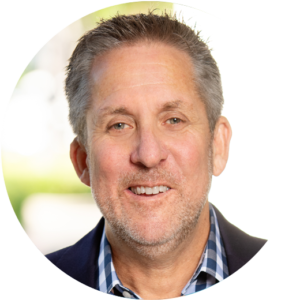“We have two ears and one mouth so that we can listen twice as much as we speak.”
These words, spoken almost 2000 years ago by the Greek philosopher Epictetus, perfectly describe why you need to master effective listening skills in order to succeed in business and, for that matter, in life.
Nothing good happens when we stop listening to each other.
If you read my blog on becoming a better listener, you know that when you learn how to be consistently heard, you naturally become better at listening and making others feel heard.
But, the impact of presentation skills training on your ability to listen well is even bigger than that.
Attention Spans Getting Shorter
Today, with the pace at which we all run, the constant fierce competition for mindshare, and the ubiquitous digital distractions at our fingertips, we humans are rapidly getting worse at listening to each other.
A major 2015 study suggests that the human attention span, defined as the ability to sustain focus without getting distracted, is now less than that of a goldfish.
Did I mention that nothing good happens when we stop listening to each other?
The Good News
You can find countless effective listening courses online—and even more lists of five to ten steps you can take—to become a better listener. Most of that information is pretty good and works, as long as you make the effort to consciously apply what’s being suggested.
The Bad News
When it comes to listening, most of the time we react unconsciously.
Multiple studies suggest that we only retain about 25% of what was said. Even worse, we make the other party feel unheard. And, to continue on the theme, nothing good happens when people don’t feel heard.
The Surprising News
Everything you need to start becoming a better unconscious listener can be gained through a really good presentation skills course.
Not only do you get better at making others feel heard because you feel heard, you start to automatically default to habits (i.e., communication behaviors) that enable you to listen more actively and for longer periods of time.
Replace Bad Communication Habits with Good Habits
One of the things we’ve learned from the thousands of people who attend Mandel workshops every year is that most people have three damaging habits that negatively impact their ability to effectively express themselves.
These same bad habits also impede their ability to listen to others.
Fortunately, we’ve also learned how to help people replace those unproductive habits with productive ones, through self-awareness and coaching-driven instruction and practice.
Let’s briefly explore each of these habit transformations and how they impact effective listening.
- Closed Disengaged Posture → Open Engaged Posture
Nonverbal communication speaks volumes. In fact, people tend to trust what they see more than what they hear.Would you feel heard if listeners were slouching while crossing their arms? Or would that posture make you feel like they were disinterested? Defensive? Maybe even hostile?
Presentation skills training helps you develop an open, engaged posture that signals to others your genuine interest. This makes the person you’re talking to feel that you’re ready and willing to listen, which in turn helps them open up and more candidly share their thoughts.
- Discomfort with Silence → Comfort with Pauses
All too often, especially when under pressure, people feel the need to fill any silence with noise. They’re so uncomfortable with this vacuum that they “um”, they “ah”, and fill the empty space with unnecessary clutter words like “and so” and “you know”.Not only does this diminish your credibility—it isn’t conducive to good listening. When you fail to pause, the person you’re speaking with can’t even get a word in.
In presentation skills training you learn that silence is your friend. You will come to love (and default to) pausing because it gives you time to think, to breathe—most importantly, it gives the other party time to process and react to what you’re saying.
You learn how to quiet the mind, enabling you to truly hear and experience what the other party has to say. You learn never to confuse “waiting to speak” with good listening.
- Fleeting Eye Contact → Sustained Eye Connection
Eye contact is as much a part of communication as the words being exchanged. But when people are under pressure during high stakes or uncomfortable situations, their eyes will often dart around.You may tend to focus your vision on inanimate objects—like your smart device, projection screen, or even the ground. By failing to make eye contact, you miss the nonverbal cues the other party is giving you and, even worse, you could make them feel like you’re not interested in what they have to say.
In presentation skills training you learn and practice how to connect with individuals using sustained eye contact. The proper use of eye contact signals to other people that you’re interested in, and care about, what they think and what they have to say.
Becoming a Great Listener
Keep seeking out tips and techniques that will help you consciously be a more effective listener. But if you want to build the unconscious habits of a GREAT listener, invest in world-class presentation skills training.
It will help you feel heard, making you more open to what others have to say. It will help you build good habits and break unproductive ones that may be getting in your way. It will help you become someone who has the increasingly rare ability to connect more deeply with those around you in this noisy, attention-anemic world.
And that is vital because good things happen when we listen to each other.
Learn More
If you’re ready to take the next step toward becoming a truly GREAT listener, or if you want to explore training for your team, consider enrolling in Mandel’s world-class presentation skills workshop The Extraordinary Presenter™.







